Charles Armstrong: Building Creative Relationships At The Trampery
By Something CuratedYou’ve likely heard of co-working and how it’s the new way to work. Businesses are becoming more mobile, global and the idea of an office has changed over time. Co-working spaces are already popular in cities where office space is at a premium price and where free-wifi coffee shops just don’t seem to cut it when you need a nice place to meet a client or a place to put together a presentation. The Trampery is one co-working space that’s changing the rules. The organisation have several sites that are revolutionising the way people think about co-working, including workspaces in Old Street, Bevenden Street, Tower Bridge and Hackney Wick.
The amenities are attractive, which makes The Trampery a huge draw: bright and airy shared workspaces—complete with meeting rooms and fully stocked kitchens and even private event space. Overall, The Trampery has become a place where entrepreneurs and professionals of all walks of life can network and share ideas and a workspace for professionals in technology and arts: they’ve had famous fashion residents such as British designer Jonathan Saunders. We interview Charles Armstrong, the founder of The Trampery on what makes London a great place for co-working, how the corporate offices and work spaces have changed over time and what The Trampery does differently.
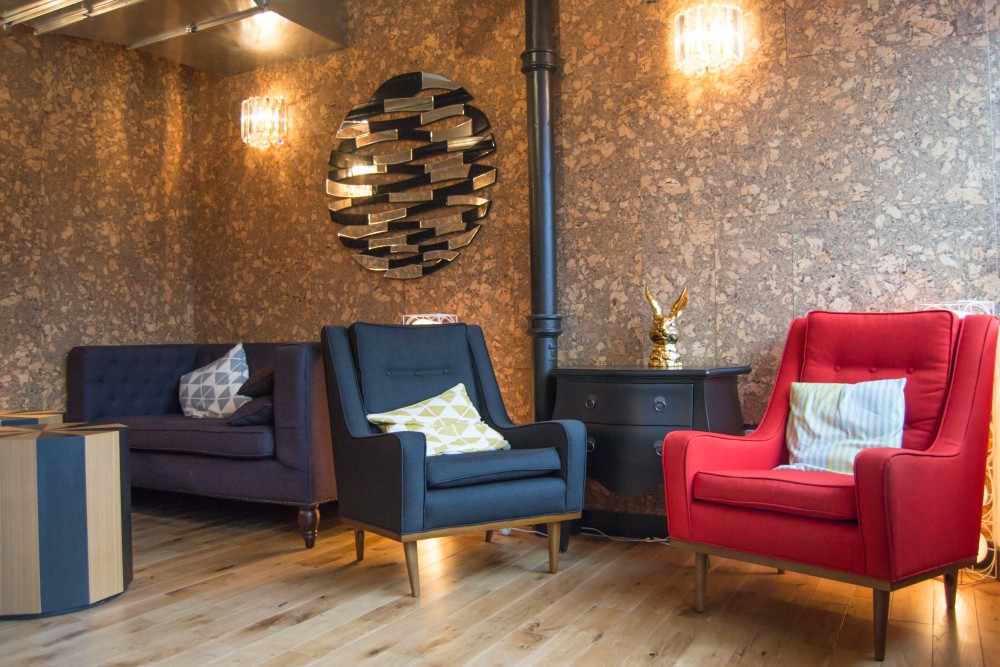
Something Curated: Tell us about The Trampery, the kinds of work spaces you have, the locations where you are and who works at your spaces?
Charles Armstrong: “The Trampery has a very simple mission—to create beautiful places that bring together innovators and creative people and help them to realize the things they are trying to do. We started in 2009 which was actually the first start-up space in Shoreditch, it was the year that David Cameron announced the creation of Tech City initiative. We’ve done size buildings since then and all of them are in the east of London. We had a very tight focus on the creative communities here. Each space is targeting a different group and focus. We’re not a cookie-cutter chain and each space has different features that compliment the community that lives and works in each neighbourhood. We think that it wouldn’t work if we were a chain. Software, architecture, fashion, digital arts, travel and tourism—our clients are from many different fields and each location tries to help these creative people with the technology and spaces they need to produce great work.”
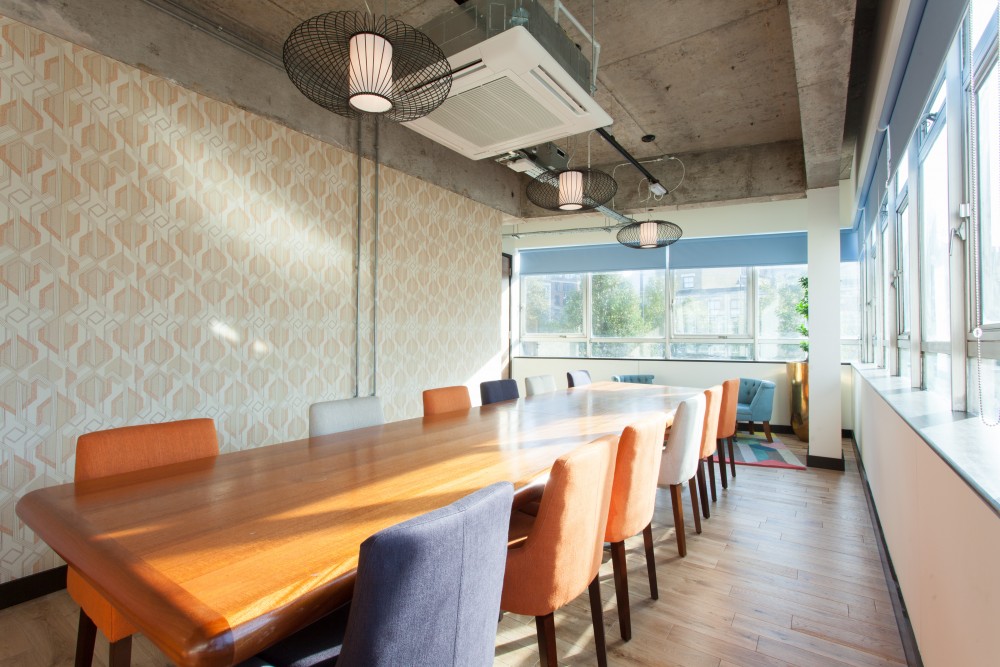
SC: Tell us about your career path? What is the vision/ethos behind the Trampery?
CA: “My background is sociology. When I came to look at co-working space design and found the perfect spaces for The Trampery, I looked at it from a sociology perspective. If you try to understand what makes a successful business then you start to unpick the approach to a workspace and come up with spaces that are geared towards how people feel in each space. The different ways that people want to interact throughout different stages of the day and providing environments that they can elect to be in. For instance, if somebody is sitting at a desk, they are implicitly signalling to everyone around them that they want to get on with their work and they probably don’t wan to be disturbed. But if they come into a lounge area and they’re sitting in a breakfast area with a cup of coffee, they’re likely signalling that they are open to someone coming over and chatting with them. If they go and sit in a private booth with a book or on a phone call, again they are sending a different signal—so making sure there’s a variety of those kinds of places available in one space is key.”
SC: It’s a bit like choosing your children but what is your favourite Trampery location and why?
CA: “Trampery Old Street is my personal favourite and it was actually the most difficult location to finish. The one that I set my heart on earliest took three years to make happen. It’s the location where I’ve done most of the interior myself as well. To actually get our hands on the building took a long time. I first started thinking of using this building in 2011 … the building had been out of use for several years. It was really tumbled down and used to be Hackney Council’s housing services office in the 1960s and that carried on until the ‘80s and then there was an outfit called Hoxton Bibliotheque in Shoreditch that did desktop publishing that was here as well. There were lots of printing industries here and that was very popular, and then after that there was a little incubator company called the Innovatory and then that fell out of use.”
SC: Did that make you feel like the location might not be a successful one or did it encourage you to try to get the building anyway?
CA: “From the first time I came into this building—mind, you it had been a complete wreck and there were squatters—I knew we could make something fantastic here. Shoreditch had obviously evolved from the ‘90s and this is really the epicentre of the innovation community here. Just the fundamental characteristics of the building and the glazing all the way around, lots of natural light, a big and open floor plan, and original windows. It made the space really special. We actually sandblasted the ceilings to the original concrete. And that’s why it took such a long time: we had to persuade Hackney Council to give us the lease and then we had to raise the finance to completely redevelop the site, because it had to be redone—we had to take it right down to the bare walls and build from that.”
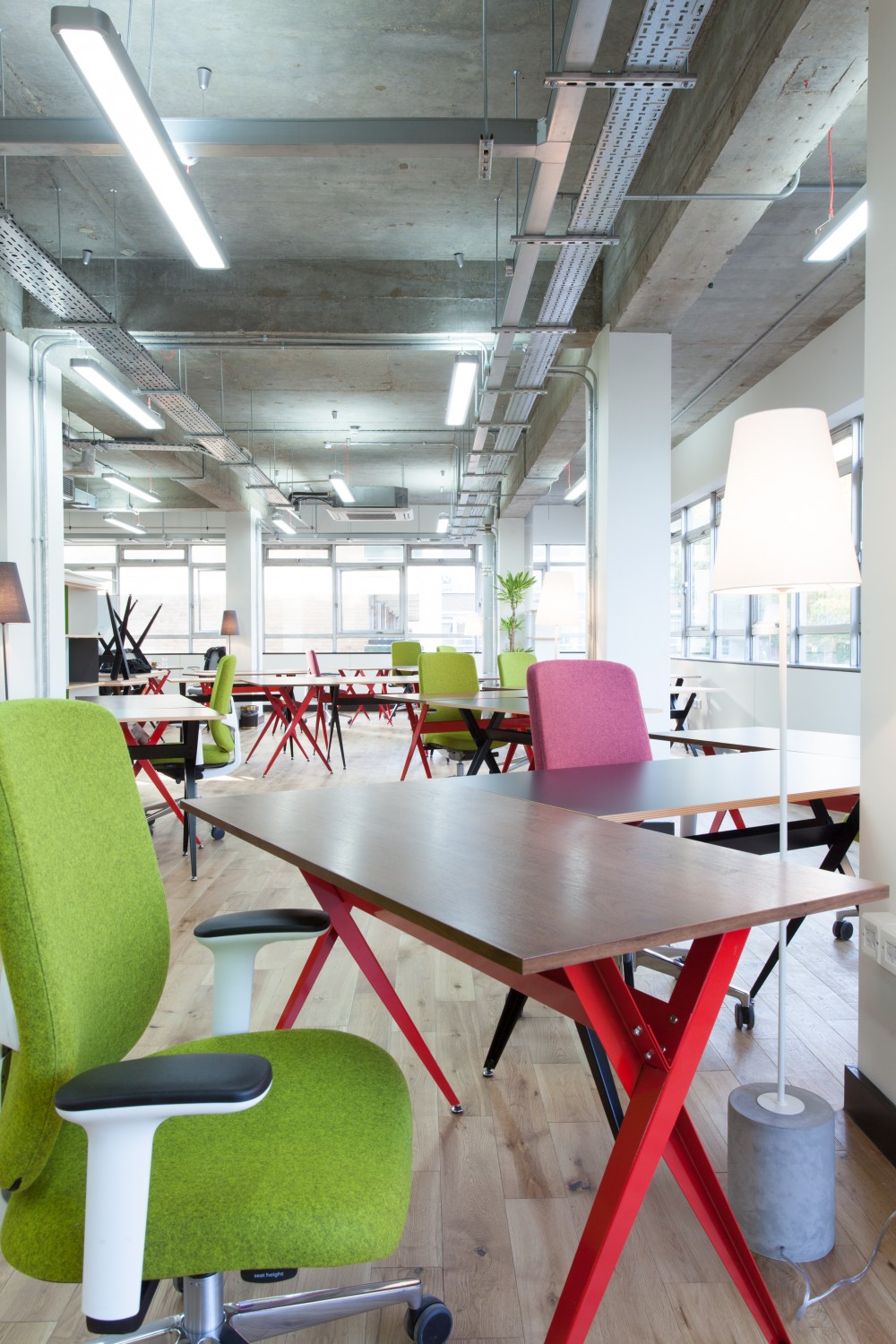
SC: Have you had any noteworthy residents? How do you think The Trampery community helped cultivate their work?
CA: “In all of the sectors that we work in, it’s been brilliant to see some of the talented figures in this industry wanting to be a part of our communities. And that’s really valuable because if you have people such as Jonathan Saunders working from The Trampery, then people who are just starting out in their career who are also in The Trampery, it really creates a place where they can network with their role models—it gives them the opportunity to learn from people who have already achieved significant milestones in their careers. Someone else who really became quite well-known is Nick d’Aloisio, the founder of Summly which was later bought by Yahoo and it later became their news digest. The Trampery was actually the first location where he based his business after moving out of his parents’ spare room. He was just 16 years old at the time. And I think out of every sector we’ve had people come in and grow businesses that are some of the leading businesses in their sectors. That’s really exciting for us because they are still a part of the family. We had our 6th birthday last month here at Old Street and we had alumni from every location going back to 2009 and they had lots of stories to share. Many of them are still based in London.”
SC: What are some of the best independent co-working spaces in London in your opinion (other than The Trampery)?
CA: “There are a broad variety of co-working spaces in London—more than anywhere else I think. The Impact Hub in Islington was one of the first open plan spaces in London and I actually had a little bit of involvement in that space and was on the advisory board. It’s stood up so well and they did it on a shoestring budget. It went on to spawn a global network of Impact Hubs too. Another place I really like is Trinity Buoy Wharf just east of Canary Wharf, it was done in the ‘90s and it’s created its own little enclave of artists—it’s really the first place in London where the architects used old shipping containers as work spaces and it was really ahead of its time. What I like about both of these is that they were very successful in fostering tightly-knit communities, it wasn’t just about the facilities or beautiful architecture, it was about designing and managing a space that would help form very strong links between the people that were attracted the the spaces they built.”
SC: What did you learn while creating The Trampery? Tell us about your approach to creating work space and a work environment? How have you approached each location differently?
CA: “Every project we do we’re trying to do something new and that mean with every project, we’re learn what we’ve done right and what didn’t go so well. Thankfully, we do more things right than wrong! I think the biggest single lesson is that social spaces and activities are equally important to desks and laptops for all of our members. So when we’re designing, we always have to keep the people in mind. With each building, what started as just a kitchen, gradually started getting bigger and bigger as we realized how people wanted to work and socialize in the space. That’s a big departure from conventional office design where the kitchen is just tucked away in the corner. We look at what we want the area to provide and then we find furniture and design elements that will complement. Finding that balance between explicit working facilities and informal social spaces is crucial—we always need to give each equal attention and weight in a space. For meetings, you want people to be at a desk that lets them be far enough apart where they can have their laptops with them and not bumping into each other but also close enough where it feels quite relaxed.”
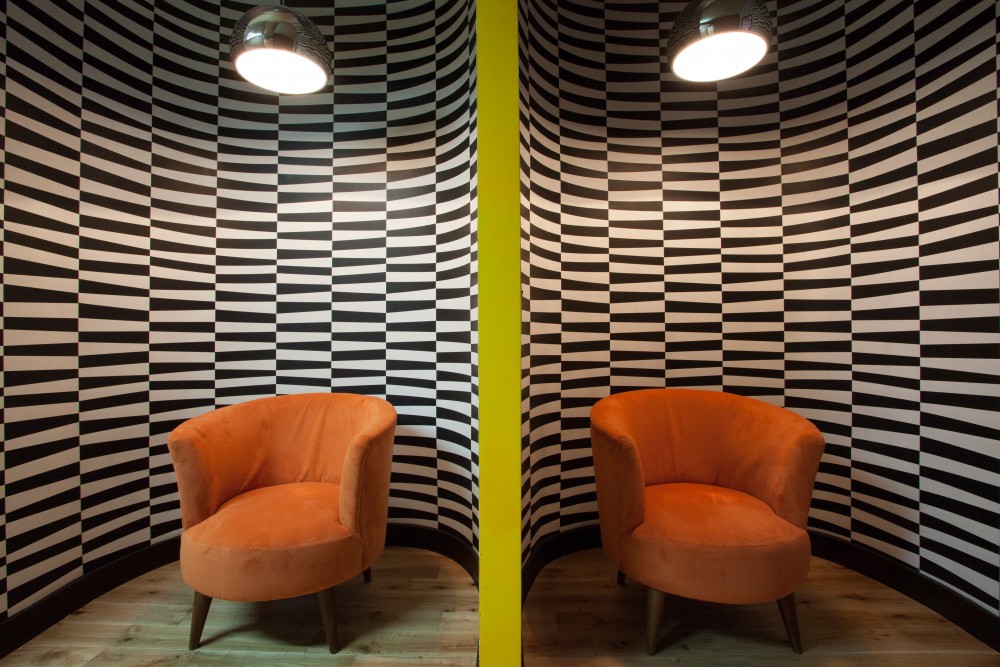
SC: What do you think makes a successful office? Some offices are creating smaller, more intimate meeting rooms—even sleep areas for staff to meditate or take a nap. What do you think has spurred this change in workplaces?
CA: “A successful working environment is actually no different that a successful home environment. The same considerations you bring into making a comfortable home for a family should be used when creating an office space. The advent of the factory in the 18th and 19th century set a completely different pattern for working spaces and created an environment for people where they looked at companies as if they were machines and looked at workers as if they were machines too. The things that you care about and that directly lead to your success are creativity, good links between people in your team and collaboration, good flows of information—all subtle factors that are social. Cumulatively, I think the central element is actually about culture and cultivating a certain kind of culture and space that fosters the ideas you care about. So people come into The Trampery and the first thing they see is the architecture and the design, and they think that’s what it’s about but actually that’s just the stage set for what’s really happening, which is networking and the various social interactions—that’s where the best work comes from.”
SC: What are the workplace needs of those working in technology and the arts and how does the Trampery meet that need?
CA: “The humanization of technology is an interesting concept that we try to work with. In all of our buildings there’s a huge infrastructure of cables and internet connections but as much as possible we want that to fade in the background. It’s just like running water: it’s so essential to every business that you need to be able to take it for granted and you want it to be invisible as much as possible. A lot of the businesses we work with are technology businesses and they are innovating completely new possibilities. It’s been most interesting with the fashion and arts businesses we’re working with we try to help them with tools they might need to help with the design process and help them with the technology they might need to help get designs over to a manufacturer for prototyping or whether it’s new e-commerce possibilities or whether it’s wearable tech, we’ve been able to help people make connections here they might meet like-minded creatives. The very first collaboration that sprung up in 2009 was actually between an art gallery and a mobile app developer, two sectors that might not have immediately come together without this kind of co-working space.”
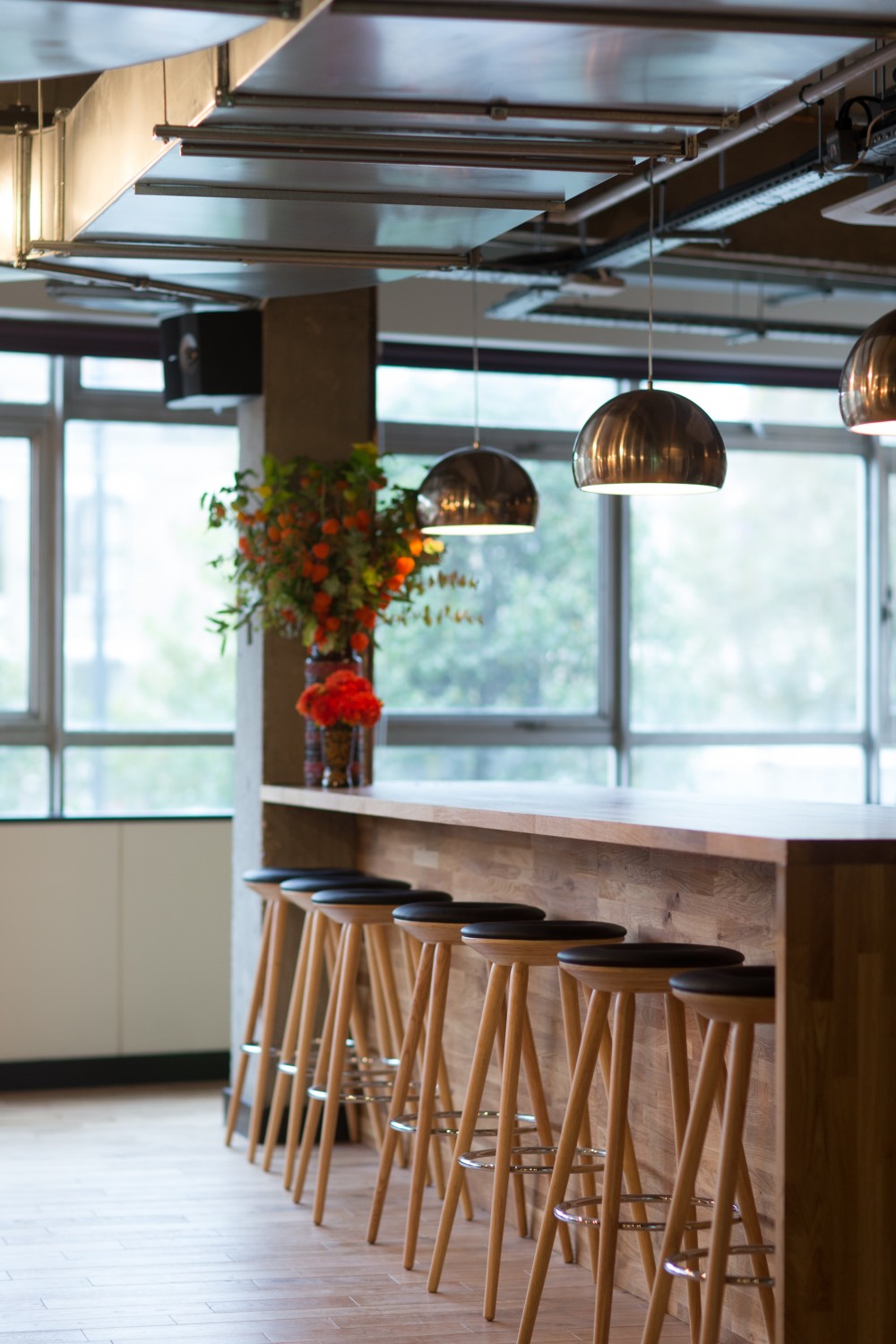
SC: Tell us about places you’ve travelled around the world. Which are your favourites and why? What beautiful design elements from these places inspire you to create new spaces or new projects?
CA: “Recently I’ve been travelling almost every month to Oslo, we’re working with the Oslo city government to help masterplan a new innovation district there so it’s taking The Trampery philosophy to a new level. It won’t be operating under The Trampery brand but we’re forming a consortium with a number of brilliant businesses to help bring that project forward. I think for several years I’ve been fascinated by Nordic design—it’s very different and community based and less individualistic and really powering ahead at the moment. I keep thinking that the Nordic model and that approach to design is what is trending at the moment and will create great spaces in this century.
We also operate The Oslo Innovation Agency here at Old Street which is a landing pad and short-term residency for creatives and Nordic entrepreneurs who want to come to London from that region. I ran a two-month project in Ghana introducing communication technology to young people there. It’s inspiring to see how communities with very limited resources can find ways to be more efficient—you can help creativity flourish when people aren’t overwhelmed by resources. Scarcity can be a very creative thing which a contemporary trope. I also spent a year after university in the Isles of Scilly which is absolutely gorgeous there, it gets really windy there in the winter with huge waves from the sea but there’s all kinds of tropical that grow wild there and I think that’s where I first started thinking about how a shared workspace can create a focus for a community and help foster new possibilities.”
SC: Tell us about your typical workday (or as typical a workday might get).
CA: “It’s fairly unpredictable but I couldn’t live any other way. I always shift my day around the deadlines and trying to spend one day a week working from home and the rest at the office. Currently I’m travelling out of the country three time a month and I’m having to juggle things. I like when I’m in London because I can get so much done. My bicycle is the fundamental thing—I wouldn’t be able to keep the schedule I do without my bicycle. It keeps me fit and I can get more quickly from point to point across London than I would be able to do any other way.”
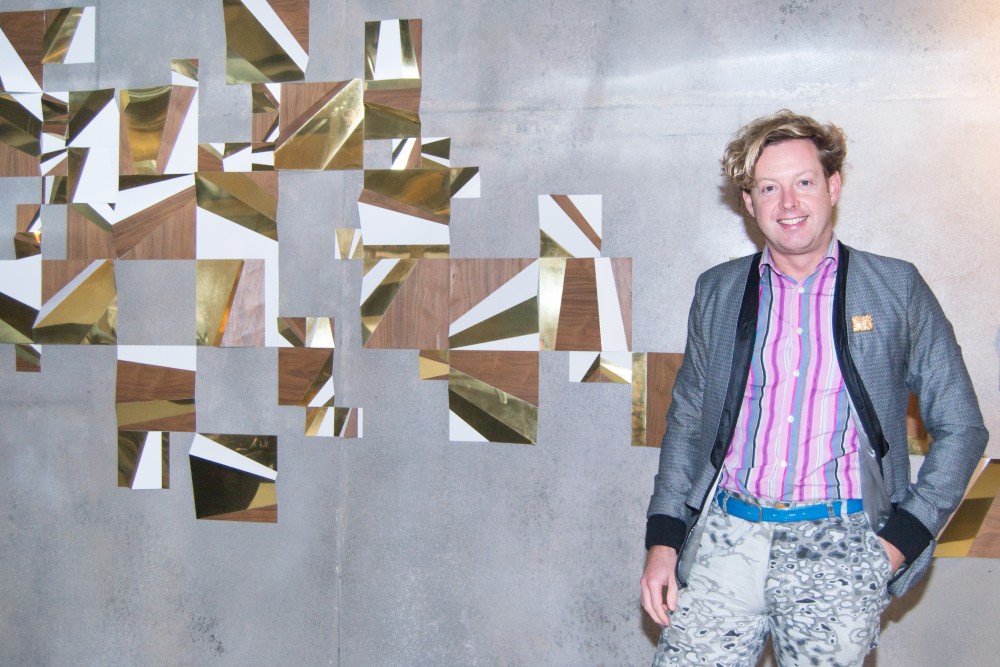
SC: What habits or hobbies do you do to keep yourself inspired? Tell us about something you do for yourself or for friends that keeps you happy and gets you going.
CA: “I play the piano and the spinet and I try to play for an hour every day. It’s amazing: you get completely absorbed in what you’re doing and block out the rest of the world while you’re playing because it’s technically challenging and also creatively challenging, and that pretty much guarantees that any thoughts of work go completely out of your head. And because I live by the river, I got myself a kayak and in the spring, summer and fall I like throw it in the water and paddle along and that is a brilliant way of getting any stress out of my system. I also entertain quite a bit and host friends for dinners and cocktail parties. I like to make sure that I’m constantly surrounded by friends who are keeping me in line and challenging me in different ways—for entrepreneurs particularly it’s so easy to let the balance slip and that might seem like a good idea in the short term but it comes back to haunt. I really do try to make sure that I’m nourished in other ways outside of the work.”
SC: What restaurants do you like to go to? What art exhibits have you seen recently?
CA: “One of the restaurants I really like is Andina, it’s a Peruvian restaurant in the area and they make the meanest cocktails, mostly pisco based, and they have their own infusions—it’s great. The beetroot and grapefruit cocktail is a really good one. I really liked the Frieze London Masters this year and the Museum of Everything stand which featured some of the outsider artists. They had their own little bar there and only a few pieces on display but that exhibit really lifted my spirits.”
SC: Where do you live in London? Where is your personal office (at home/elsewhere)?
CA: “I live in Hackney Wick just by River Lea—it’s like my sanctuary. I’ve got trees and there’s always the sound of running water. It’s a great way to escape the city. Old Street is my main office base but I spend time at all of the locations, and then I’m travelling to meetings with clients a lot.”